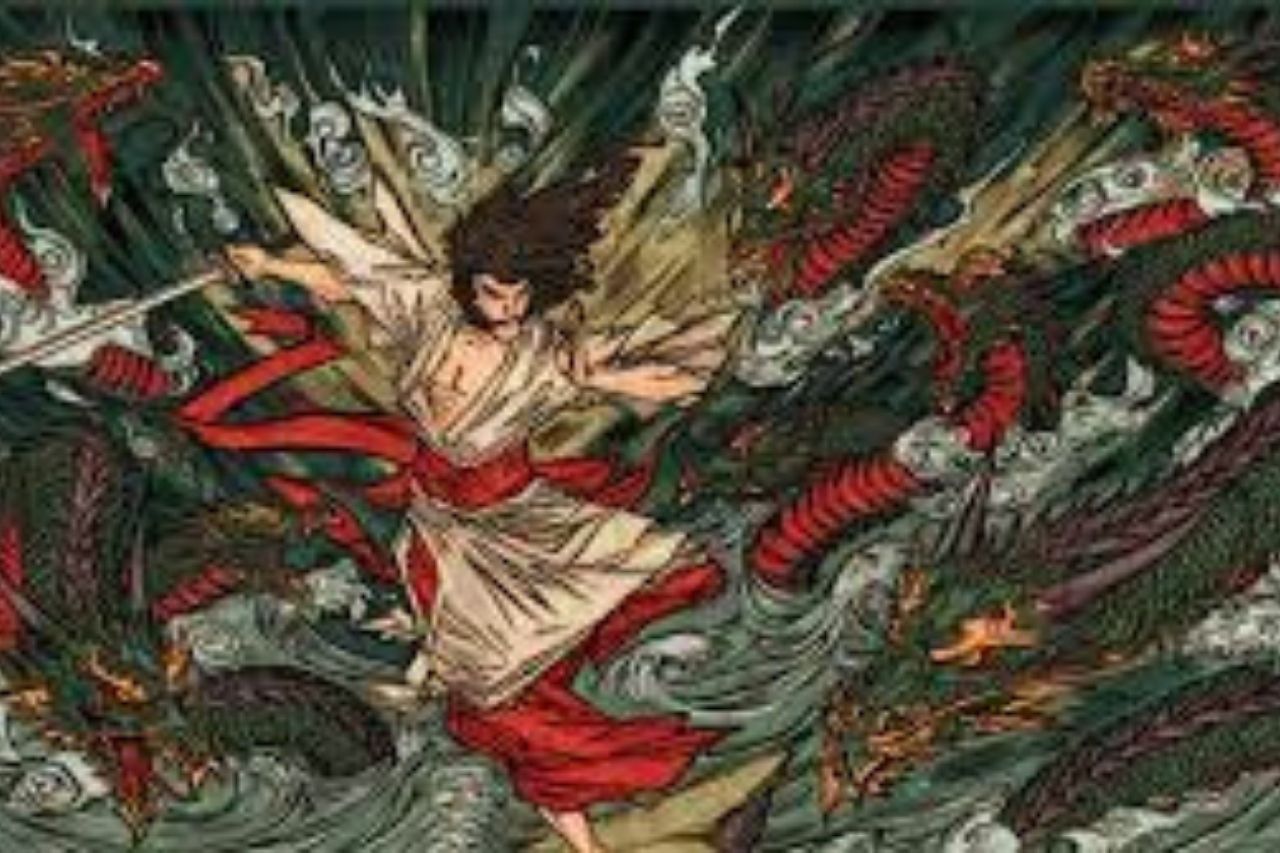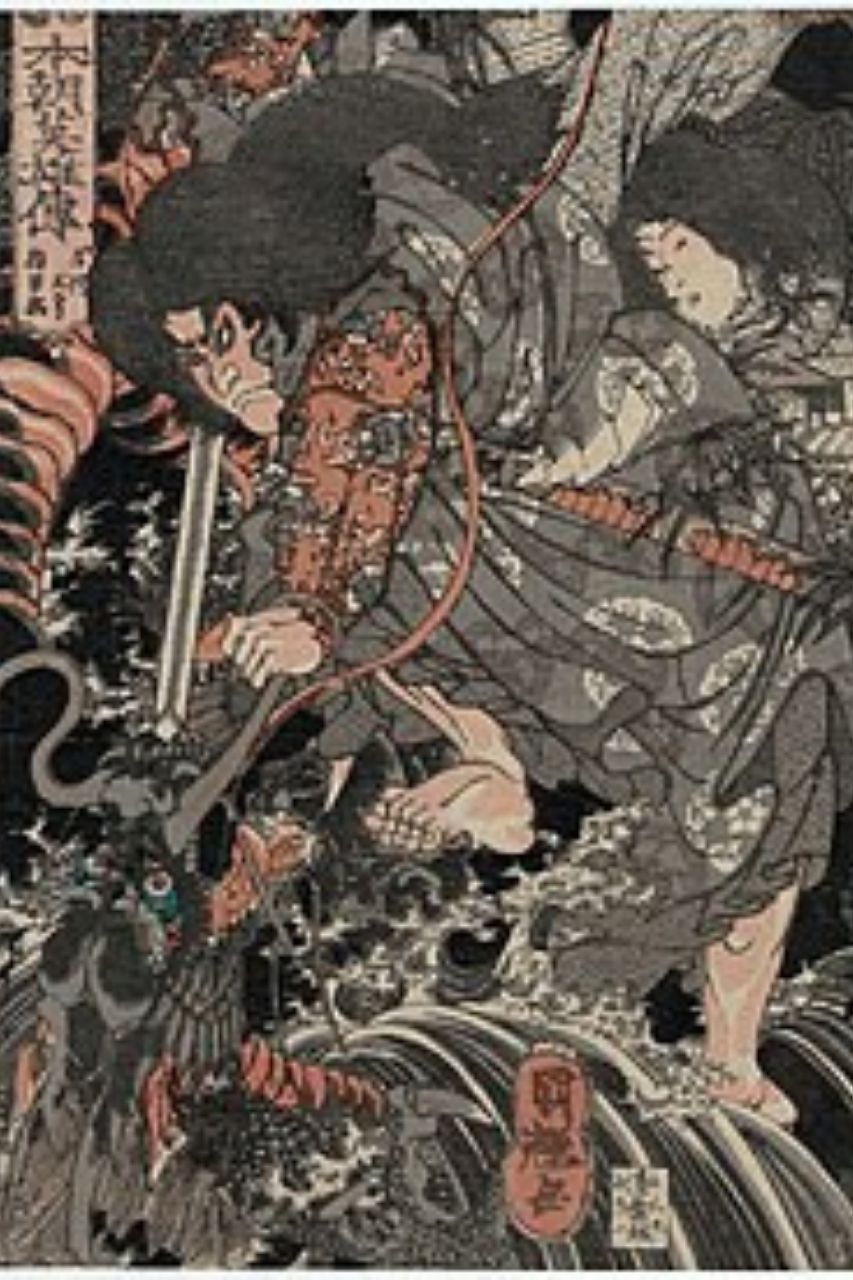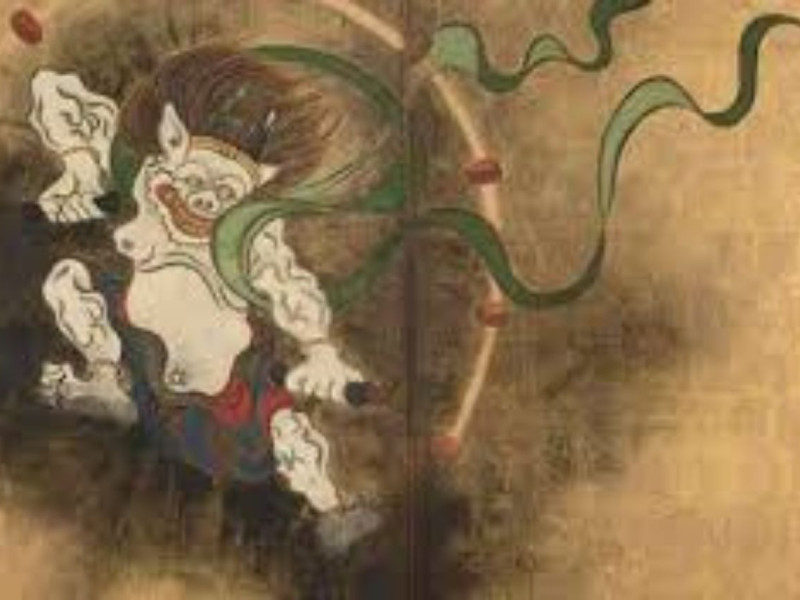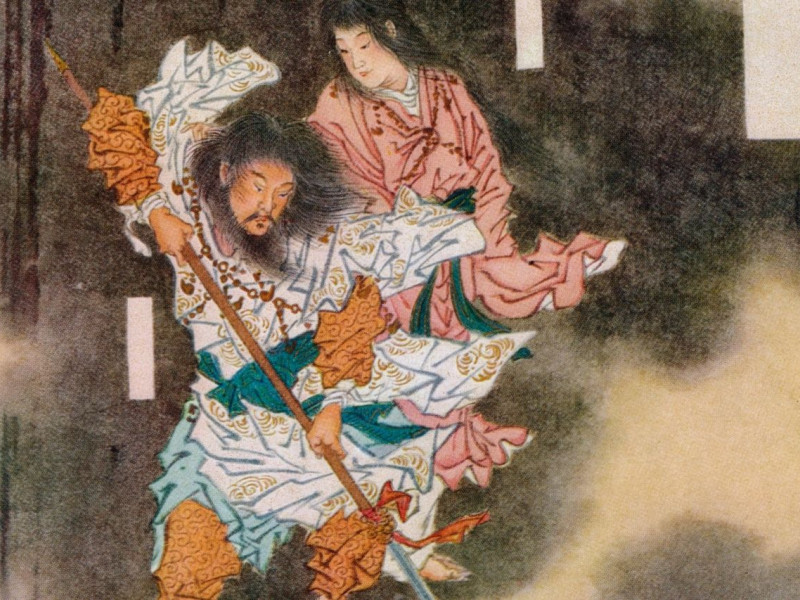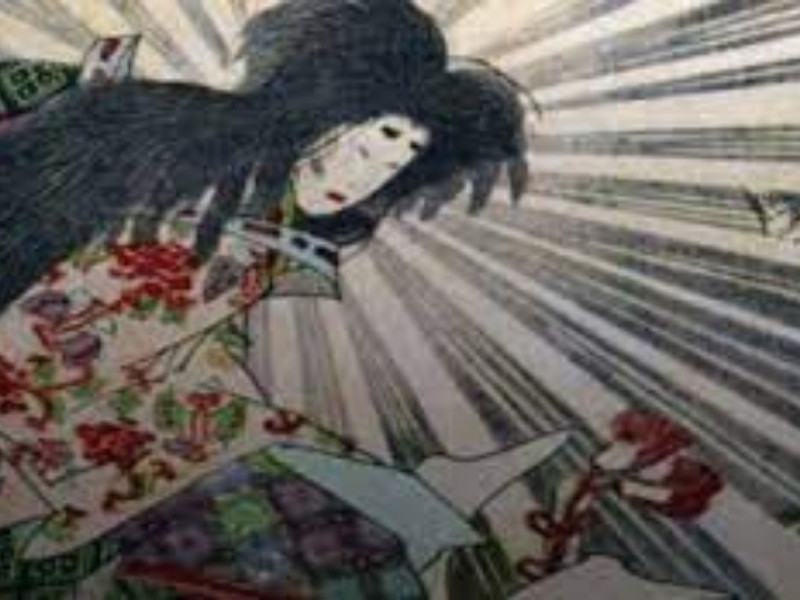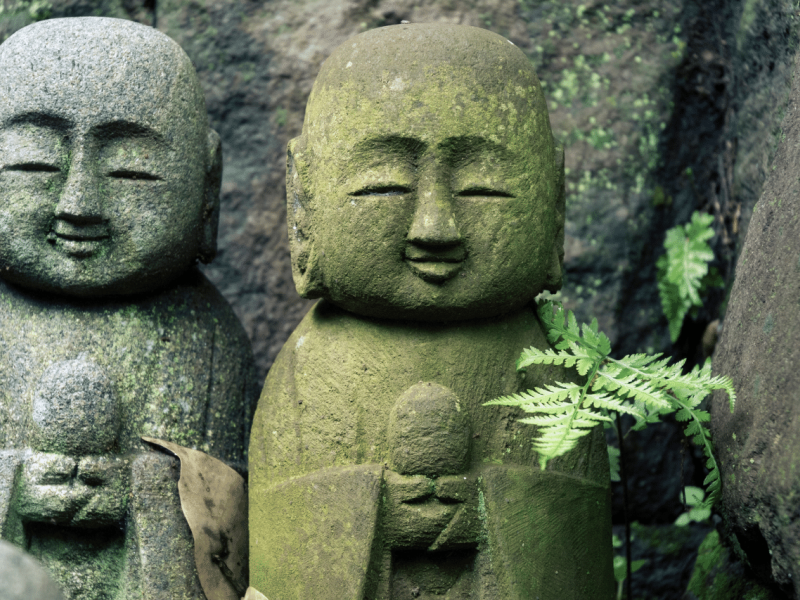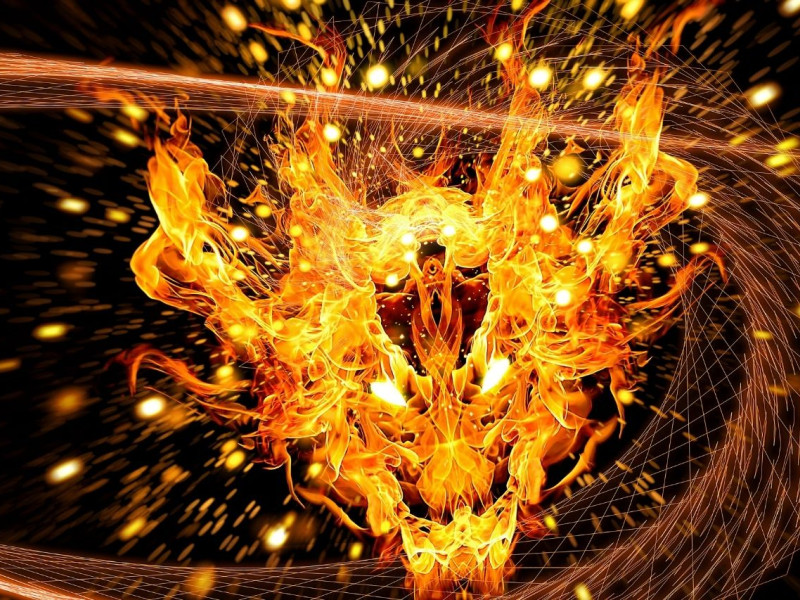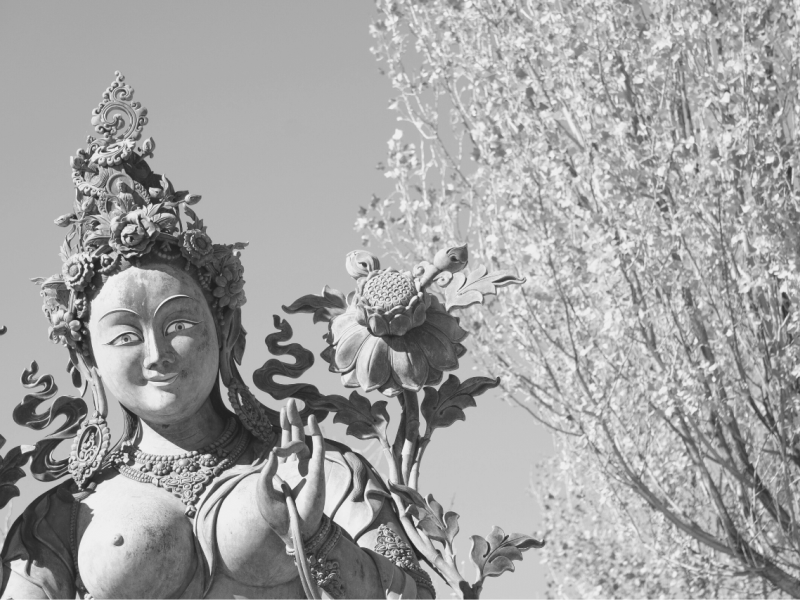Susanoo
Susanoo: Another Tumultuous Storm God in Japanese Mythology
Susanoo is the god of sea and storms in Japanese mythology. He is the brother of the other storm gods Raijin and Fujin, and he was also similarly chaotic. He was also very powerful, and he carried a famous Japanese weapon. Read on to find out how he killed a dragon and created this renowned weapon.
Who Is Susanoo in Japanese Mythology?
Susanoo is the angry and powerful god of storms in Japanese mythology. His other name was Susanoo-no-Mikoto, meaning “Great God Susanoo.” He was powerful, chaotic, and wild, which didn’t bode well since he controlled the sea and storms. He was a kami, a Japanese god or spirit, and many of his shrines are located around the seas of Japan.
He had many other gods and spirits under his control. But he wasn’t always chaotic and out of control. Sometimes, like other gods, he could be loving and generous when he chose to be. He was a tumultuous god, but he still became one of Japan’s most well-known hero gods.
Like his other storm-related brothers, he has a disheveled appearance, reflecting his powers as a storm god. Susanoo was most famous for killing an eight-headed dragon with a sword and later received a new one called Kusanagi-no-Tsurugi. Because of his popularity, he appears in many myths in Japanese mythology. He is part of the Shinto religious tales.
Susanoo: Origin and Family
Susanoo was one of the sons born of Izanagi, one of the Japanese creator deities. He was born after his father escaped Yomi, the Land of the Underworld, with two of his siblings. His famous siblings included Amaterasu, the sun goddess, and Tsukuyomi, the moon god. But he was more similar to his brothers Raijin, the thunder god, and Fujin, the wind god.
Depending on the story, his family changes. Susanoo had many wives and lovers and thus many children. These children came from both goddesses and human women. His first and most famous wife was called Kushinada-hime, and she gave him five children.
Myths of Susanoo, the Japanese Storm God
Because of his fame, he was part of a lot of interesting myths. He was, of course, famous for his ability to create storms upon the seas of Japan, but he was also a good warrior. Susanoo's weapons gave him a chance at a new life after he made some mistakes. But first, he had a unique birth that came from his father Izanagi washing off impurities from the underworld.
The Famous Birth of Susanoo the Shinto Deity
Izanagi, Susanoo’s father, hurried to Yomi, the Land of the Dead, after his wife, Izanami, died. He hoped that he could still save her and help her return to the land of the living. But Izanami had already consumed some food from the underworld, so when Izanagi went to get her, she was already rotting away. Frightened, he rushed out of Yomi with her yelling after him.
He put a boulder in front of the entrance to prevent her escape, and she bore two children from her rotting body and sent them after Izanagi to wreak chaos. Izanagi rushed away from Yomi and knew that he needed to wash off all the impurities that were in Yomi. He found a hot spring and jumped in, scrubbing them off. But while he was washing his face, he “birthed” three different gods.
Amaterasu and Tsukuyomi came out of his eyes, and Susanoo came out of his nose. Izanagi decided that these three gods would be the highest of all the deities and would rule over the heavens. Susanoo was named guardian of the heavens as well. However, this decision to allow the siblings to work together to rule didn’t work out as well as Izanagi planned.
Amaterasu and Susanoo, Sibling Rivalry
Susanoo was an angry god, and his temper couldn’t always be controlled. He was very difficult to work with between the three of them, and Izanagi decided to banish him from the heavens. On his way out, Susanoo went to see Amaterasu say a final goodbye to her. It was a strange thing to do since they constantly fought.
Amaterasu could see through this pretend act to be kind and sweet. So, she challenged Susanoo to a sort of competition. They decided to each take one another’s main possession and use it to create more gods. Once the gods were created, they would determine who won the competition.
Amaterasu used his sword to create three female spirits. Susanoo took her necklace, and he made five male spirits. Amaterasu tricked Susanoo and told him that because he used her necklace to create the men, they were hers. Susanoo took the women as his, and Amaterasu “won” the competition.
The Aftermath of Her Trickery
Susanoo was furious when he realized the trick she’d done, and he flew into a wild rage. It caused stormy weather as well. He destroyed a rice field that belonged to his sister, and he killed one of her horses. He threw the horse, and it killed one of Amaterasu’s favorite handmaidens.
She was so upset that she rushed away and hid in her sorrow, and Susanoo was finally banished. But because Amaterasu was out for some time, the world was dark for a time.
Susanoo and the Dragon
Susanoo, like Lucifer in the Bible, fell from the heavens because of his banishment. He landed on earth in a place called Izumo, which is a city in Japan. A couple found him, and they took him in and told them about their latest sadness. In a nearby sea lived an eight-headed dragon named Yamata-no-Orochi, and he had already devoured seven of this couple’s daughters.
Their final daughter was waiting to be sacrificed, and her name was Kushinada-hime. As repayment for the kindnesses, Susanoo decided to help. This was one of the moments when he decided to show his benevolent side. He and the couple decided to entrap the dragon and save Kushinada-Hime from the fate that had befallen her sisters.
He lay in waiting for the dragon, and he turned Kushinada-Hime into a comb and put her into his disheveled hair. Outside of their home, the couple put a bottle of sake, hoping the dragon would come and drink it, making him fall asleep. The dragon did, and Susanoo crept upon him and cut him into pieces. Also, when he cut into the dragon, he was able to pull out a new sword called Kusanagi-no-Tsurugi.
Family Restoration
With this famous act, Susanoo was able to get his life back. The couple, so grateful for what he did for them, offered their daughter to him as a wife. He married her and took the new sword with him, hoping to make it up to his family. He gave this new sword to his sister, and she took Susanoo’s sword as a symbol of the restoration of their relationship.
Izanagi offered a new position to Susanoo to help him make up for the past. It was to take his place as guardian of Yomi, the Land of the Dead. Susanoo agreed, and he remains in that position even today. It makes sense that he was associated with death because storms and chaos so often bring death with them.
His famous sword is found as part of the Japanese Imperial Family’s regalia. It resides in the shrine of Amaterasu at Ise.
Susanoo and Other Gods
So often, gods have similarities with deities in other cultures. Susanoo is no exception, and his battle with the dragon Orochi was like other gods fighting reptilian creatures. These include:
Thor and the serpent Jormungandr in Norse mythology
Zeus and Typhon, the dragon-headed monster in Greek mythology
Indra and Vrita, a snake-like demon in Hindu mythology
Yu the Great and Xiangliu in Chinese mythology
St. George and the Dragon in English folklore
Susanoo in Pop Culture
Susanoo or Susanoo’s name appears in a few pop media:
In “Final Fantasy XIV”
In an anime movie, “The Little Prince and the Eight-Headed Dragon”
In the video game “BlazBlue”
Conclusion
Take a look at the main points covered in the article above:
Susanoo is the god of the sea and storms in Japanese mythology
He was a chaotic and wild god, and his behavior couldn’t be controlled
He had a disheveled-looking appearance
His full title, Susanoo-no-Mikoto, meant “Great God Susanoo”
Despite his bad temper, he is one of the most famous Japanese kami, a god or spirit. He had many sea and storm spirits who worked under him
Even though he was tumultuous and often angry, he did have some good points. He could be generous and kind if he really wanted to
Susanoo was one of the children of Izanagi, one of the Japanese creator deities
His father Izanagi went to Yomi, the Land of the Dead, after his wife Izanami died
He hoped to catch her and help her return to the land of the living, but he was too late
When Izanagi got there, he saw that Izanami was already a rotting corpse
Then he raced out of Yomi and put a boulder on the entrance to keep her dead wife from escaping and found a hot spring to wash in
He wanted to scrub off the impurities that had covered him while in Yomi. But while he was washing his face, he “gave birth” to three different gods
Amaterasu, the sun goddess, and Tsukuyomi, the moon god, came out of his eyes; Susanoo dropped out of his nose
So amazed that he had birthed these deities, he decided that they should be the three gods to rule over the heavens
Susanoo also had brothers that were born from Izanami while she was a corpse in Yomi. They eventually escape Yomi, and like Susanoo, they were their own brand of storm gods
The siblings began to rule the heavens. But Susanoo proved challenging to work with, so Izanagi decided to banish him
Susanoo went to his sister to say goodbye. But she thought he wasn’t genuine because they always fought
She challenged him to a competition. She said that they would each take one of their possessions and see who could make the most gods
She took his sword and made three women. He took her necklace and made five men. Amaterasu claimed that because the men came from her necklace, they were hers, and he could have the three women
He agreed but then realized that she had tricked him, and furious, he destroyed her rice field. Then he killed her horse and threw it, killing one of her favorite handmaidens
Grieving, Amaterasu ran off, and the world went dark. Izanagi officially banished Susanoo from the heavens, and he landed in the city Izumo
There, a couple took him in and told them that their daughters had been eaten by an eight-headed dragon named Yamata-no-Orochi, who lived in the sea
They had one daughter left, and Susanoo decided to help them be free of this dragon
He turned their last daughter, Kushinada-Hime, into a comb and put it in his hair
The couple put out a bottle of sake, and the dragon drank it, making him fall asleep
Susanoo crept up on him and cut him into pieces, and inside the dragon’s body, he found a sword
The couple gave him their daughter to marry, and Susanoo gave the sword to his sister as a peace offering
Izanagi asked him to guard Yomi, and he agreed to do so
He guards the Land of the Dead even now, and he is both connected with storms and death
Susanoo, like other storm gods, had a wild and tumultuous personality. The Japanese people never knew when he would be malevolent, and that could be a frightening thing. But at least in his most famous story, he proved his kindness, and he was able to make amends with his family afterward. Unfortunately, we don’t know more, and we don’t know if he stayed benevolent or changed back to dangerous and uncontrollable.
